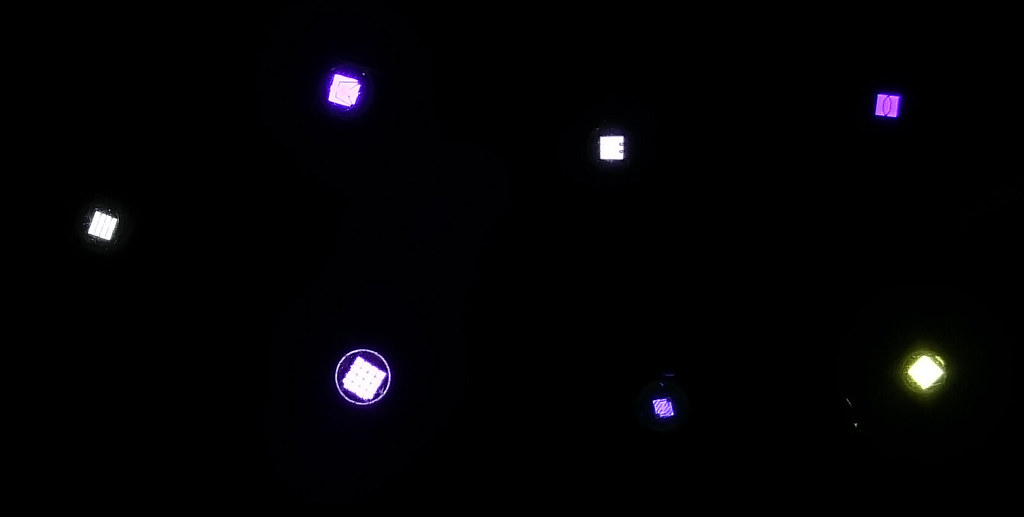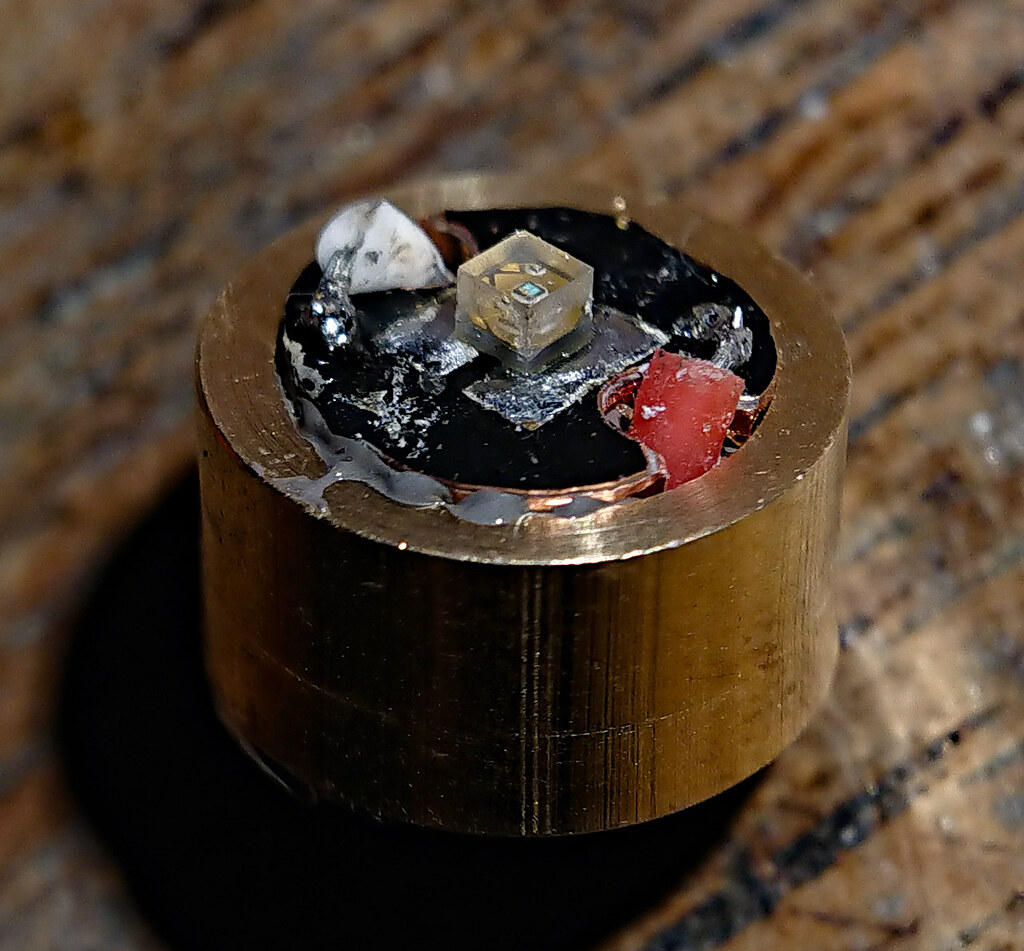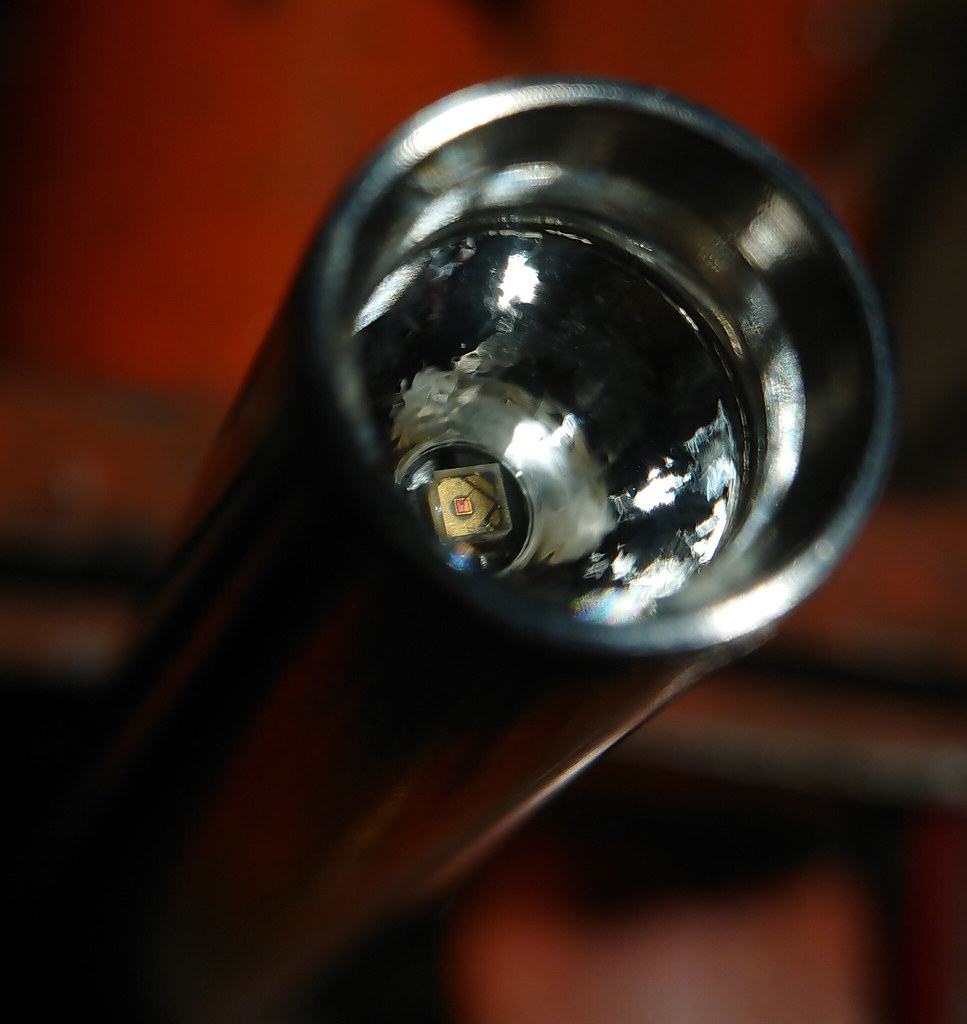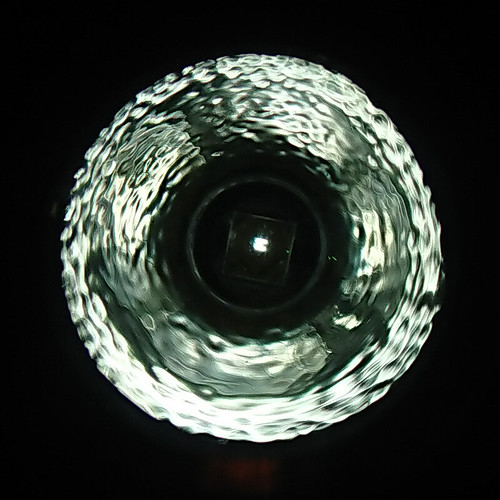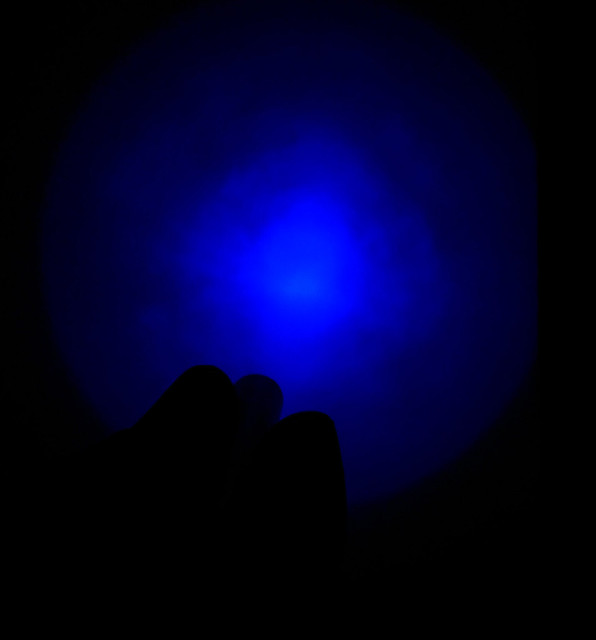Last december I updated my test method for 365nm leds and tested 4 leds (link). With the same method I tested and extra four 365nm leds and put all 8 in one chart. I think that this chart is getting way too busy, so for any more tests in the future I will only plot a selection of old tests for comparison.
I measure the leds in my usual way, I test one bare led, if possible on a DTP-board, cooled very well, starting at low current and at each increasing current setting letting the led settle for a moment before recording the numbers. What is typical for 365nm leds is that upon each current increase the initial new output shows some gradual (slow) dropping, I think it is a temperature effect in the die. Blue leds (and thus white leds) hardly show this but I know that red leds are also very sensitive to temperature.
UV led datasheet output claims are all over the place compared to what I measure. I will not claim that I am more right than any datasheet, for that my method is too indirect I think, but at least it makes it impossible to calibrate my test numbers to one correct 'milliwatt' number. So to create a calibration 'in progress' I defined what I measured compared to the datasheet specs of the Luminus SST-10 as my 'djozz-mW'. And I must admit that after testing 4 more 365nm leds now, the djozz-mW could be somewhat low compared to reality. Nevertheless I will stick to it.
My UV output tests say nothing at all about the lifetime of these leds, the tests suggest that you can easily overdrive some of them for a few times of what is in the datasheet, but I do not test what happens over time.
The 4 leds (no links to datasheets this time, but these will pop up instantly if you google for the partnrs)
Third generation LG 3535-size 365nm led 120deg, partnr. LEUVA33T00RL00 (obtained from the Convoy aliexpress store)
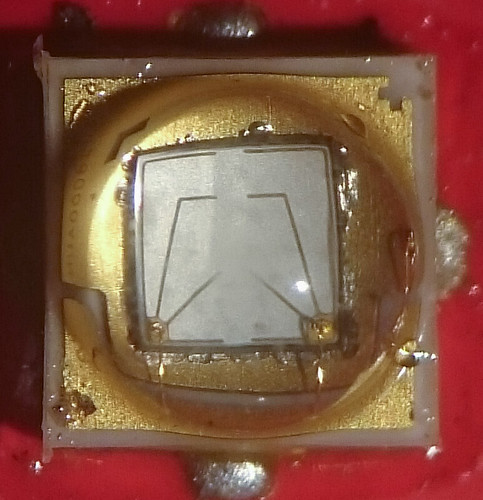
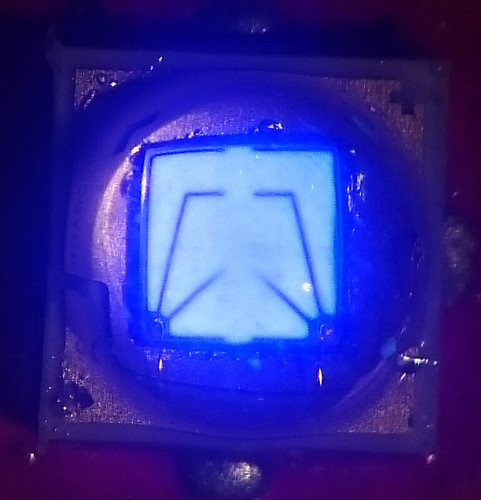
Seoul Viosys Z5 series 3535-size 365nm led, partnr. CUN66A1B (obtained from kaidomain.com)
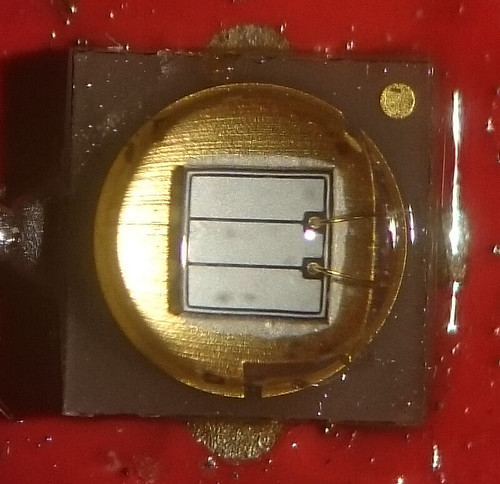
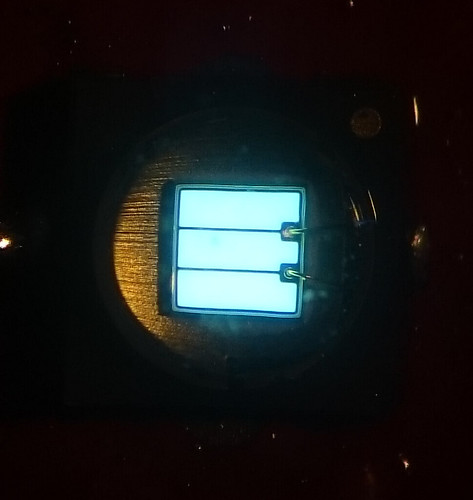
Ledengin LZ1 365nm, partnr. LZ1-00UV00 (from Mouser, lended out for testing by BLF-member scientist)
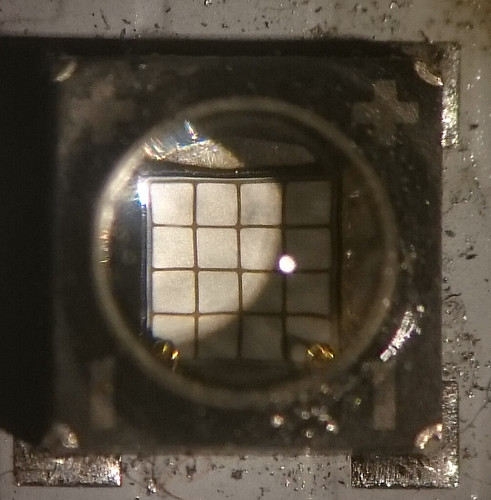
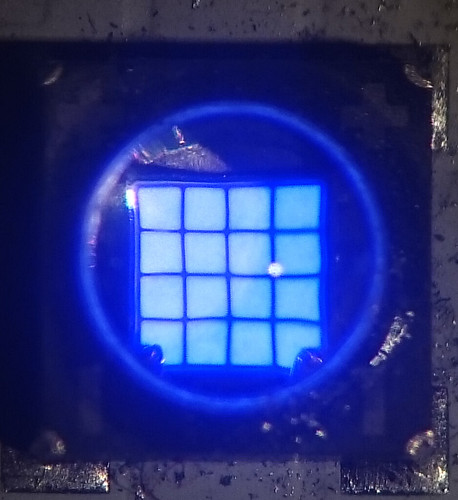
Vishay VLMU1610-365-135 tiny midpower 365nm led (from RS-online)
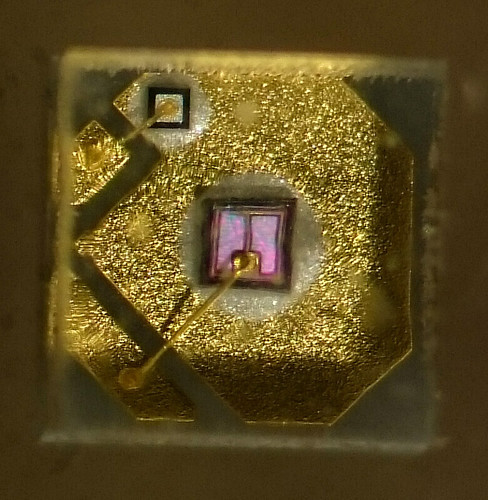
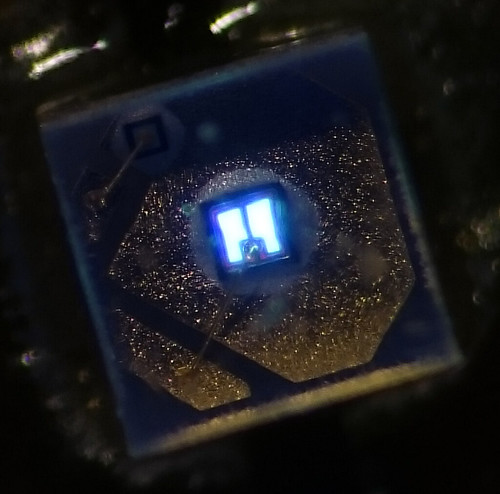
The Ledengin LZ1 has been around for a few years but I never tested it before, and also the LG led and the SeoulViosys led have been on the market for a while, but were not easy to source until now.
The Vishay led I think is fairly new, it is another category: way less output and way smaller die, it may be interesting for someone somewhere somehow that the output/die surface area of this led is very high. At least I found it interesting enough to buy some and test it :-) For idea of size, here it is on a 16mm board:
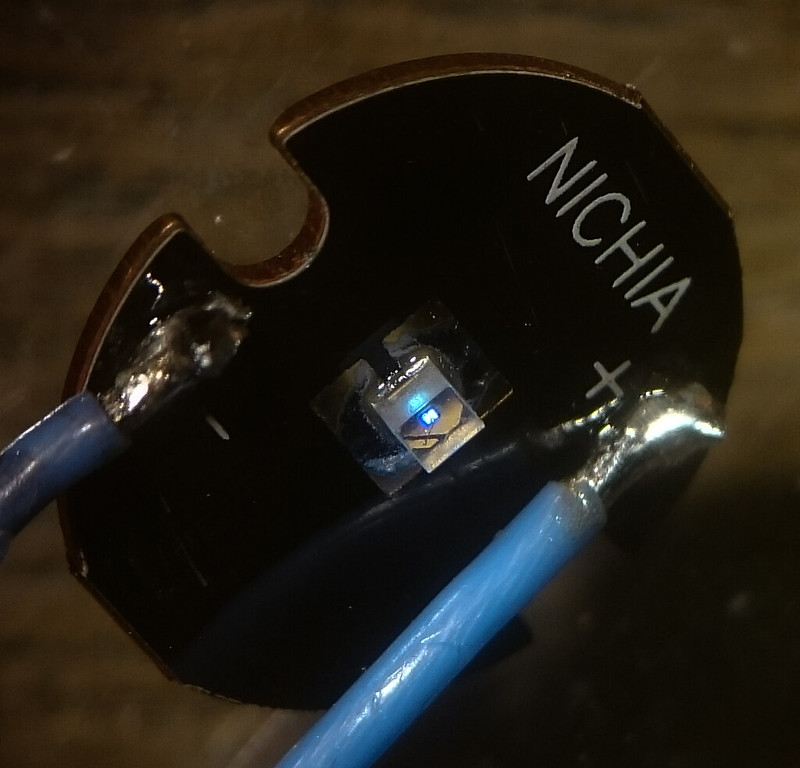
Here are the test results. As said, I put too much data in this graph, i.e. the Vf data of the Nichia 233B is completely covered by the other lines. I will do better in the future.
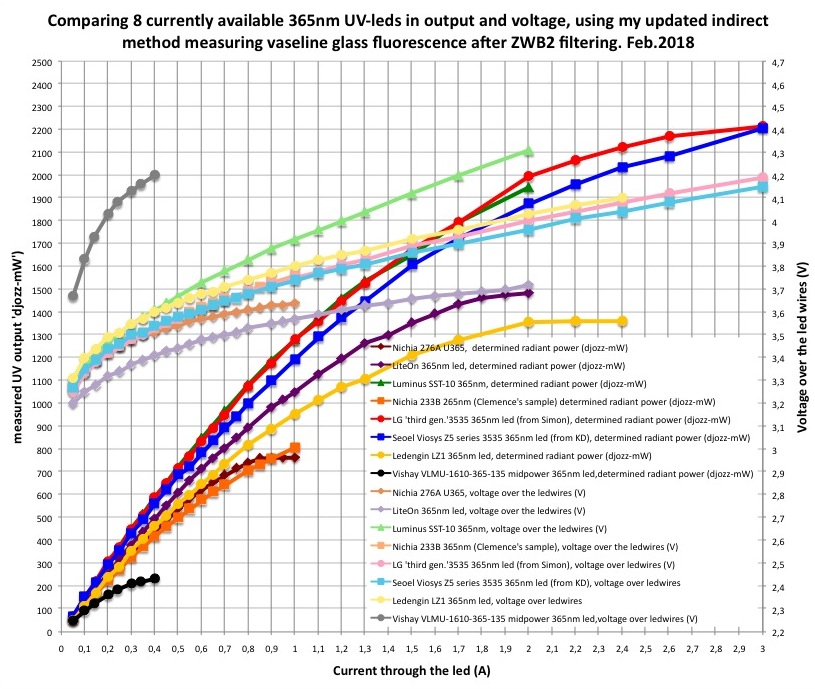
My discussion will be short as I need sleep now:
*the Vishay led works fine up to 400mA and even steady, I kept it for 10 minutes there to test, I say 200mW at 300mA is the sweetspot. I made a small BLF348 flashlight with this led direct drive on a 10440 cell (some pictures later), but although the output was very significant, the beam of this minuscule die in an OP-reflector was rubbish. It needs a smooth reflector and then very well focussed.
*The LG led and the SeoulViosys led perform very similar, both in voltage and output, and the output is again similar to the SST-10 tested earlier, but with lower Vf, so in direct drive on a single li-ion you will get more output (±30% more)
*The Ledengin led disappoints, it is a big clumsy led if you ask me. But it may be tougher than any of the others over time, who knows?
As for the amount of visible stray light, the Ledengin has the most, followed by the SeoulViosys, then the LG led, then the SST10. And nothing beats the Nichia's in absence of visible stray light.
Thanks for reading, I hope this is probably not very useful but at least interesting to read :-)
